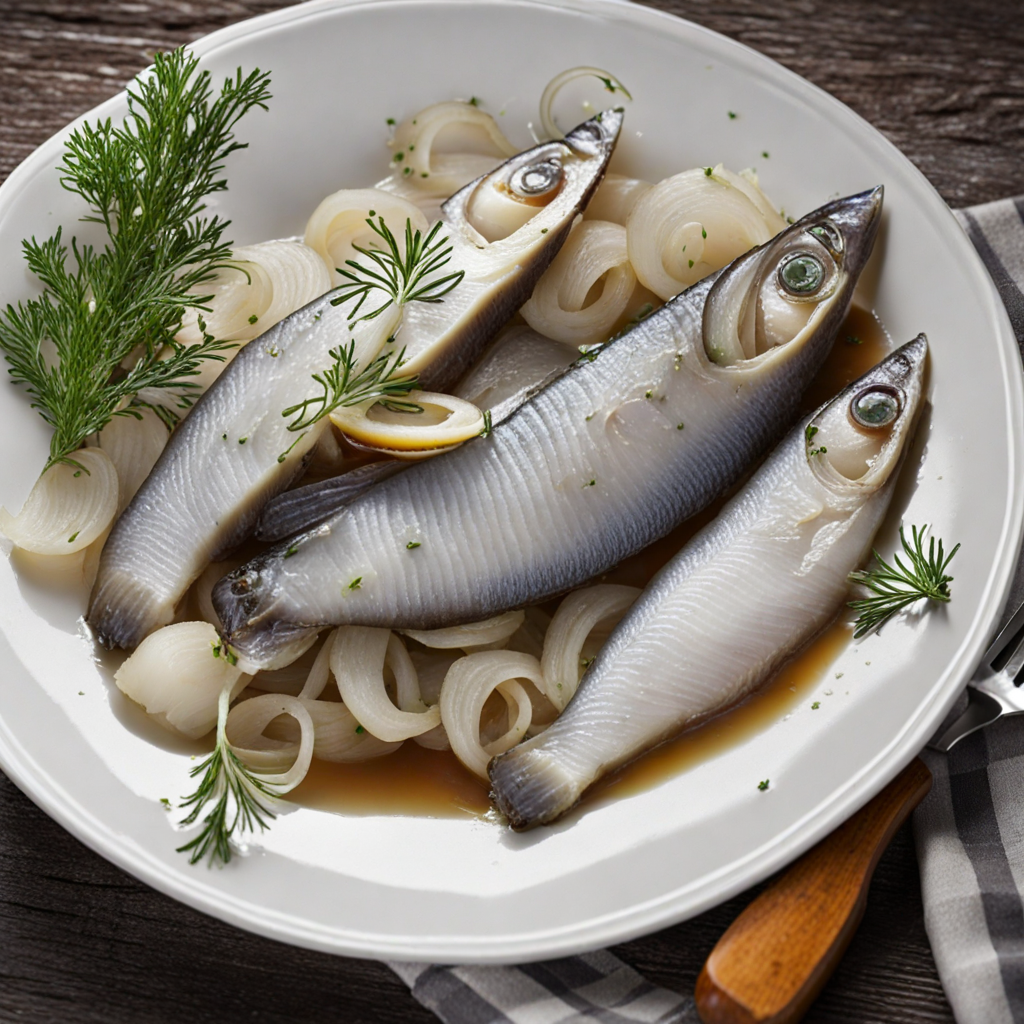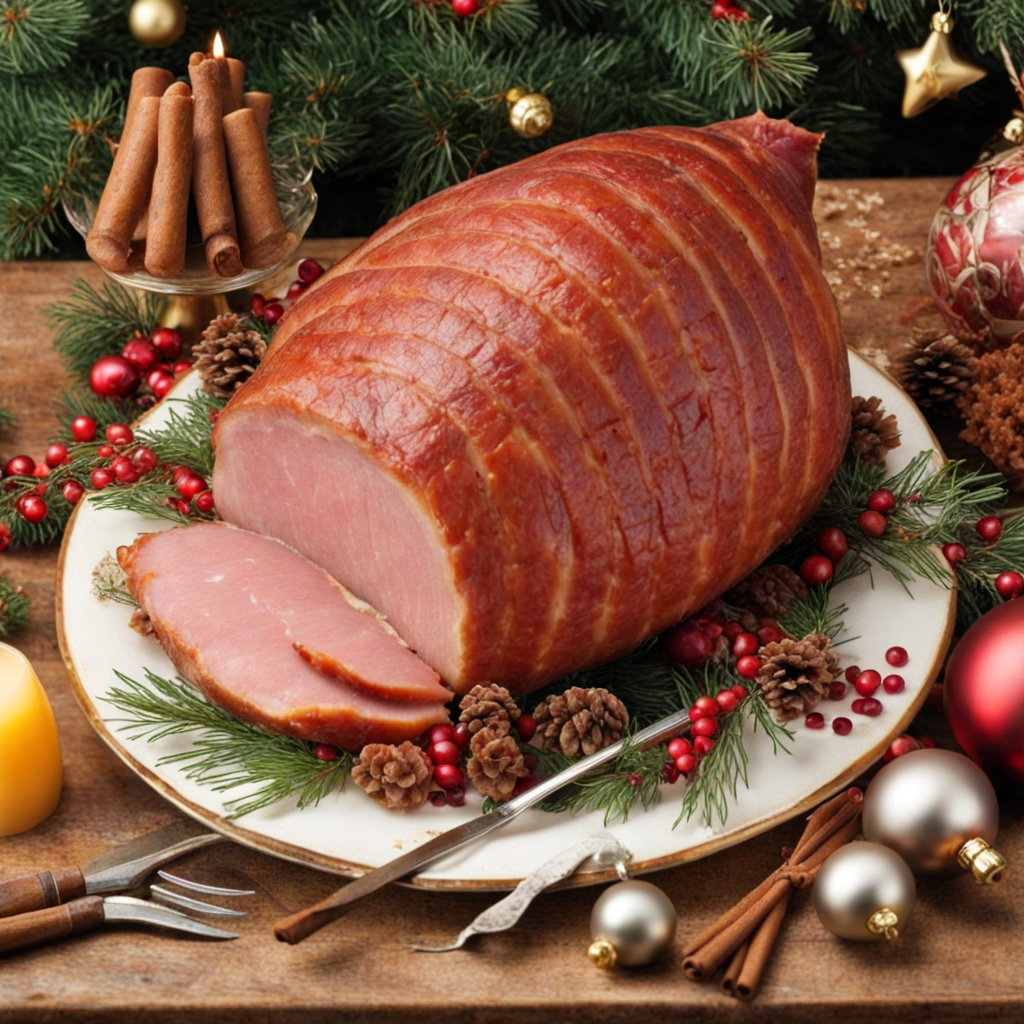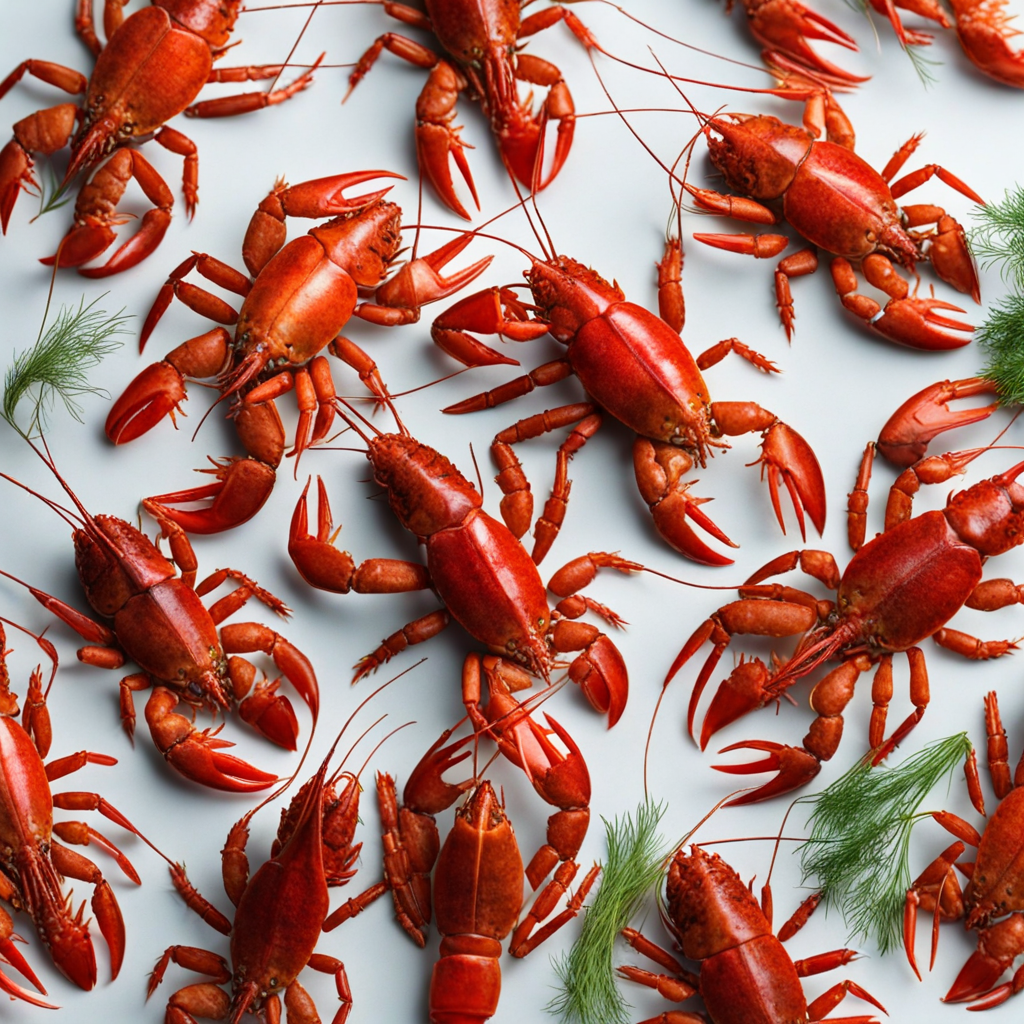Pickled Herring
Pickled herring, a beloved staple of Swedish cuisine, showcases the unique flavors of the Nordic region. This dish typically features herring, a small, oily fish that is both sustainable and nutritious. The fish is cured in a tangy brine made from vinegar, sugar, salt, and a variety of spices such as allspice, cloves, and bay leaves. The pickling process not only preserves the herring but also imbues it with a complex flavor profile that balances sweet, sour, and savory notes, making each bite an experience in itself. The herring is often served in vibrant jars that highlight the beautiful colors of the fish and its accompanying pickling liquid, adding an aesthetic appeal to the dish. Traditionally, pickled herring can be enjoyed in a variety of ways. It is commonly served on a slice of crispbread or rye bread, accompanied by finely chopped onions, fresh dill, and a dollop of sour cream or yogurt. The combination of textures—from the soft, tender fish to the crunch of the bread—creates a delightful contrast that enhances the overall enjoyment of the dish. Additionally, pickled herring is often featured on smorgasbord, a traditional Swedish buffet that showcases an array of dishes, allowing diners to experience the herring alongside other classic flavors of Sweden, such as meatballs, gravlax, and various salads. The experience of tasting pickled herring goes beyond its individual components; it speaks to the cultural heritage of Sweden and its connection to the sea. The dish is often associated with celebrations and gatherings, particularly during festive occasions like Midsummer and Christmas. With its bold flavors and rich history, pickled herring invites food enthusiasts to explore the distinct taste of Sweden, making it a must-try for anyone looking to expand their culinary horizons.
How It Became This Dish
The Culinary Journey of Inlagd Sill: A Swedish Tradition #### Origins of Inlagd Sill Inlagd sill, or pickled herring, is a beloved staple of Swedish cuisine, steeped in history and cultural significance. Its origins date back to the Middle Ages, a time when preservation methods were crucial for survival, particularly in the harsh Nordic climate. The abundance of herring in the Baltic Sea made it a practical choice for preservation, as it was plentiful and could be caught year-round. The method of pickling fish likely arose from a need to extend the shelf life of perishable food. By soaking herring in a brine solution of vinegar, salt, sugar, and various spices, early Swedes were able to create a delicacy that could last through long winters when fresh fish was not available. This technique was not unique to Sweden; many cultures around the world have utilized pickling as a preservation method. However, the Swedish approach to pickling herring has evolved into a distinct culinary tradition. #### Cultural Significance Inlagd sill holds a special place in Swedish culture, transcending mere sustenance to embody social and familial connections. It is a staple at festive gatherings, particularly during Midsummer and Christmas, when it is served alongside other traditional dishes. The dish embodies the essence of Swedish hospitality, often presented at smörgåsbord (buffets) alongside a variety of other cured and pickled foods. The significance of inlagd sill can also be observed in its regional variations. Different areas of Sweden have their own recipes, often influenced by local ingredients and customs. For instance, the addition of mustard or onion is popular in certain regions, while others might incorporate beetroot or apple for a unique twist. These variations reflect the diverse cultural landscape of Sweden, where local traditions and resources shape culinary practices. #### Development Over Time The method of pickling herring has evolved significantly over the centuries. In the 17th century, Sweden's burgeoning maritime trade opened up access to more exotic spices and ingredients, which began to influence the traditional pickling recipes. The introduction of sugar and various spices transformed simple herring into a flavorful dish that could appeal to a wider audience. Sweet and sour flavors became a hallmark of Swedish pickling, leading to the development of recipes that combined vinegar with sugar and spices like allspice, cloves, and mustard seeds. By the 19th century, inlagd sill was firmly entrenched in Swedish culinary traditions. It was during this time that the dish began to gain popularity beyond rural households. The rise of urbanization saw more Swedes moving to cities, where they sought out familiar tastes from their rural roots. Inlagd sill became a symbol of Sweden's agricultural heritage, celebrated in urban markets and restaurants alike. The 20th century marked a significant turning point for inlagd sill, as it began to gain international recognition. Swedish immigrants brought the dish with them to other countries, particularly the United States, where it became a part of the culinary landscape in Swedish-American communities. As global travel and communication increased, interest in Nordic cuisine surged, and inlagd sill was embraced by food enthusiasts eager to explore traditional Scandinavian flavors. #### Modern-Day Inlagd Sill Today, inlagd sill is a staple of Swedish cuisine, enjoyed by people of all ages. It is often served as an appetizer, accompanied by crispbread (knäckebröd), boiled potatoes, and a dollop of sour cream. The dish is also an integral part of the iconic Swedish smörgåsbord, which showcases a variety of traditional dishes ranging from cured meats to cheeses, all celebrating the rich flavors of the region. In recent years, there has been a resurgence of interest in traditional foods, with chefs and home cooks alike experimenting with new flavors and techniques. Contemporary interpretations of inlagd sill have emerged, showcasing innovative flavor combinations while respecting the roots of the dish. Ingredients such as chili, ginger, or even fruit infusions have been experimented with, bringing a modern twist to a classic favorite. This evolution reflects the dynamic nature of food culture, where tradition meets innovation. Moreover, inlagd sill also plays a role in Sweden’s growing focus on sustainability and local sourcing. As consumers become more conscious of their environmental impact, there is a renewed interest in using locally caught herring and organic ingredients in the pickling process. This not only supports local fisheries but also connects the dish to the land and waters of Sweden, reinforcing its cultural significance. #### A Symbol of Togetherness Inlagd sill is more than just a dish; it is a symbol of togetherness and celebration in Swedish culture. Its presence at festive occasions fosters a sense of community, as families and friends gather to enjoy traditional foods and share stories. The act of preparing inlagd sill, often passed down through generations, serves as a reminder of the importance of heritage and culinary traditions. As Sweden continues to navigate the complexities of modern life, inlagd sill remains a cherished link to the past. It stands as a testament to the ingenuity of rural communities who transformed a simple fish into a beloved culinary tradition. Whether enjoyed at a summer feast or a winter gathering, inlagd sill reflects the heart and soul of Swedish cuisine—simple, flavorful, and deeply rooted in history. In conclusion, the story of inlagd sill is one of resilience, adaptation, and cultural pride. From its humble beginnings as a means of preservation to its status as a beloved staple of Swedish cuisine, this pickled herring not only nourishes the body but also connects generations of Swedes to their culinary heritage. As it continues to evolve, inlagd sill will undoubtedly remain a cherished symbol of Sweden’s rich food culture for years to come.
You may like
Discover local flavors from Sweden







